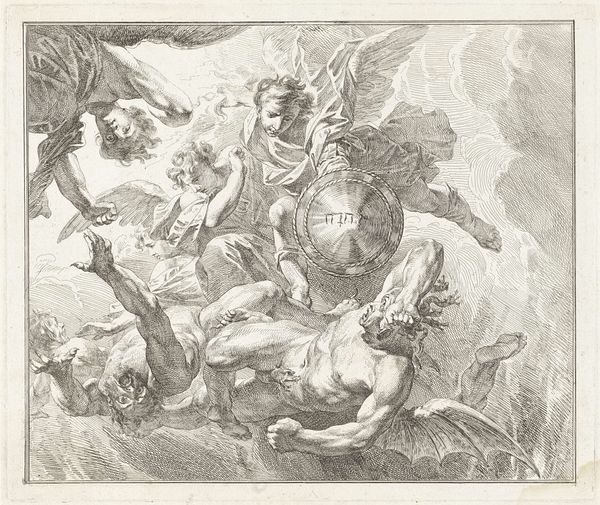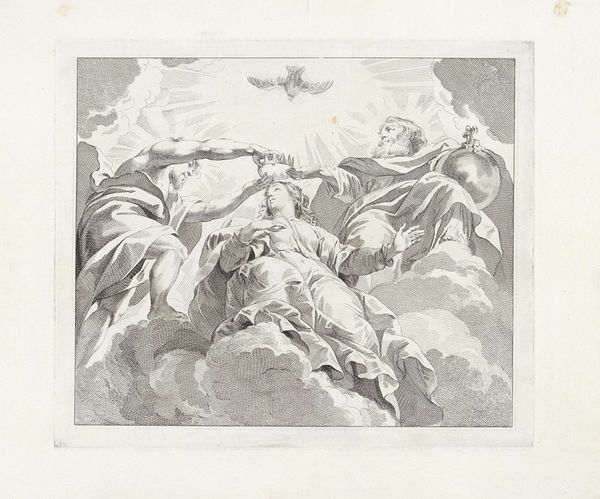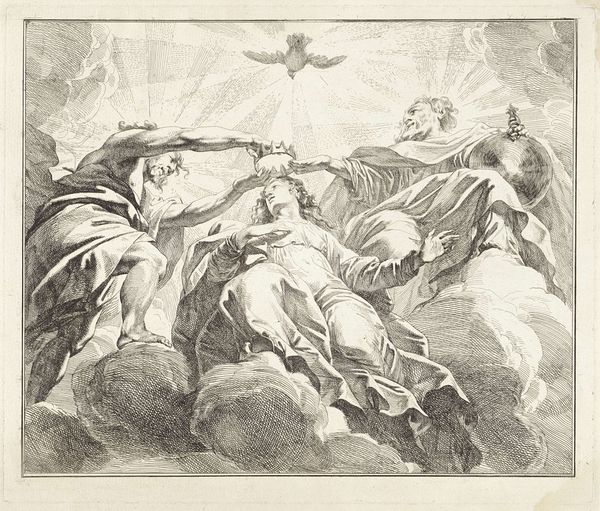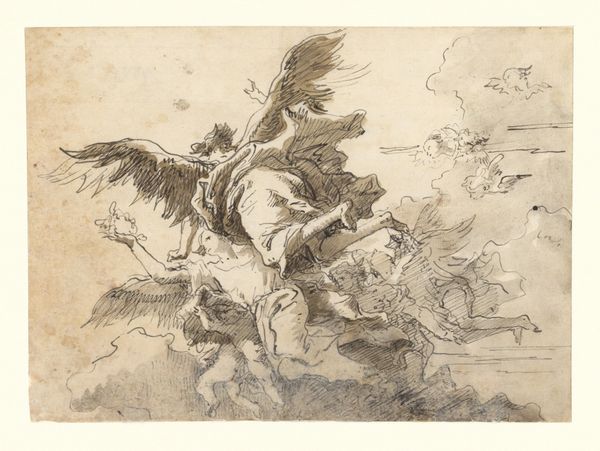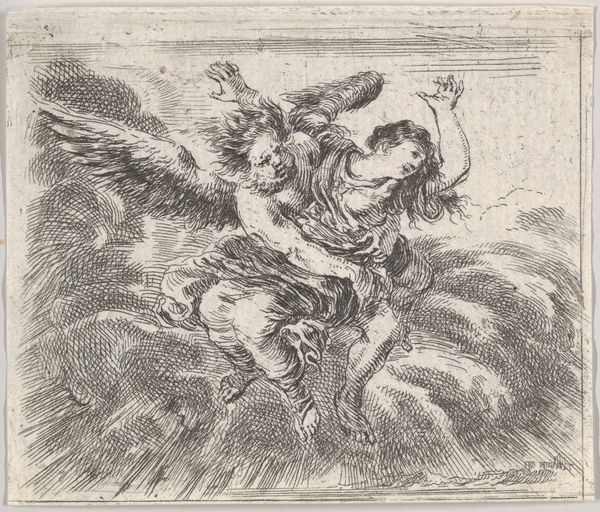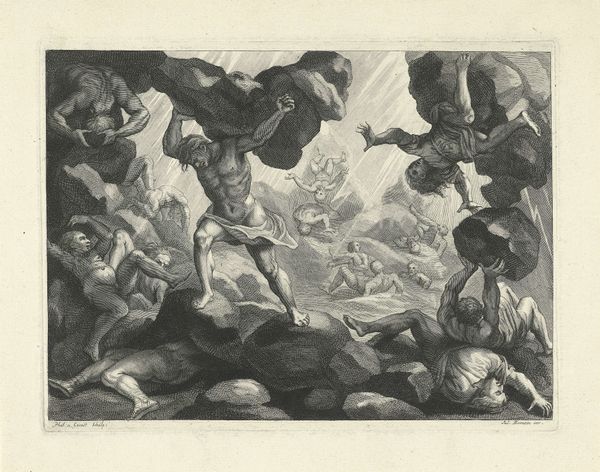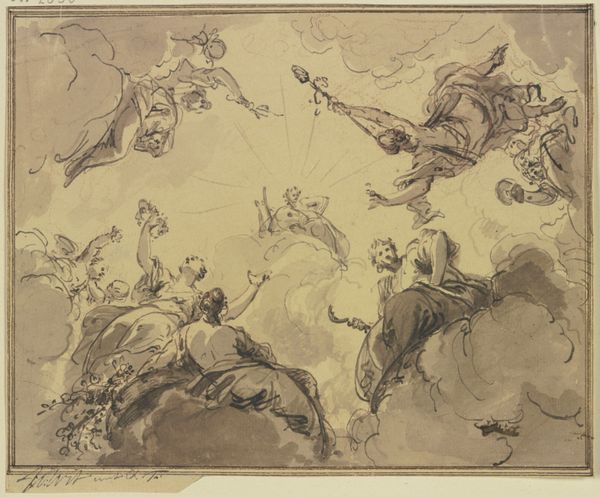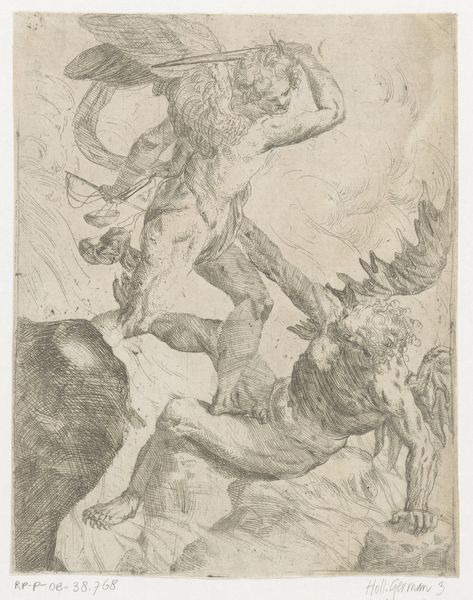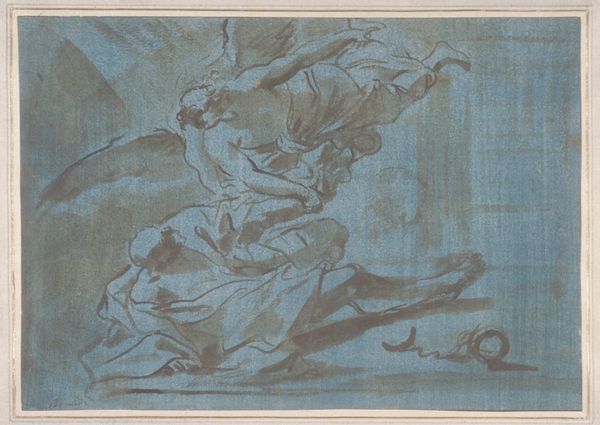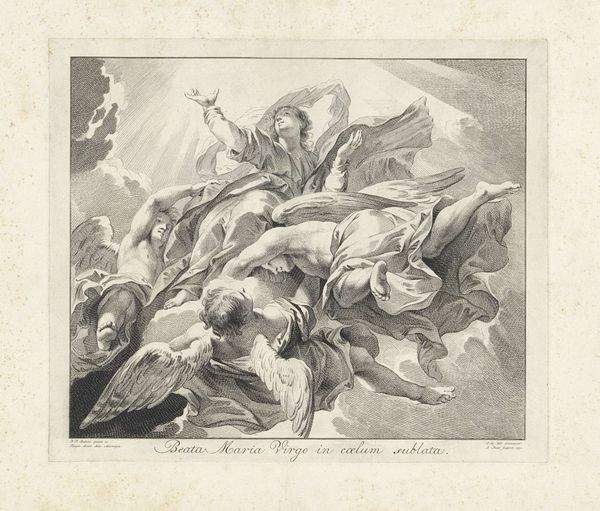
intaglio, engraving
#
baroque
#
intaglio
#
figuration
#
line
#
history-painting
#
engraving
Dimensions: height 339 mm, width 402 mm
Copyright: Rijks Museum: Open Domain
This print, "Hemelvaart van Maria," or "The Ascension of Mary," was created by Jacob de Wit in the 18th century using etching. The process of etching is a fascinating one, where the artist coats a metal plate with a waxy, protective layer, then scratches into it with a needle. The plate is then submerged in acid, which bites away at the exposed metal. The longer the acid bath, the deeper and darker the lines will be when printed. De Wit's skillful manipulation of this process is evident in the subtle gradations of tone and the intricate details of the figures and clouds. While this artwork may depict a sacred and spiritual scene, its creation is rooted in the physical labor and technical skill of the artist. The amount of work involved in the production process reflects the socio-cultural context of 18th century printmaking, when artists were seeking new ways to share their artworks and make them accessible to a wider audience. By focusing on the materials, making, and context, we can fully appreciate the meaning of de Wit's work, challenging any distinction between fine art and craft.
Comments
No comments
Be the first to comment and join the conversation on the ultimate creative platform.
